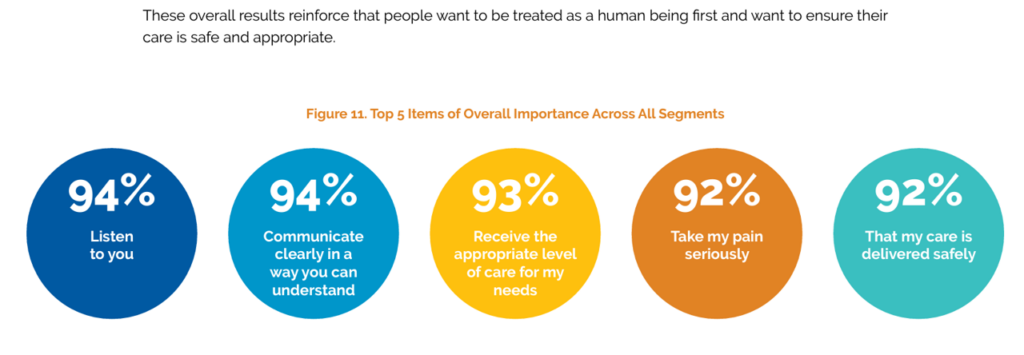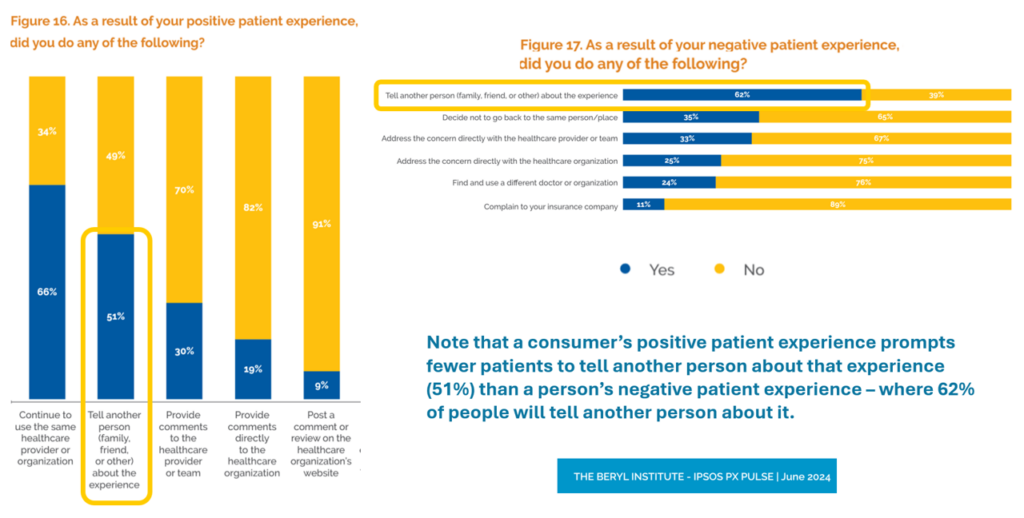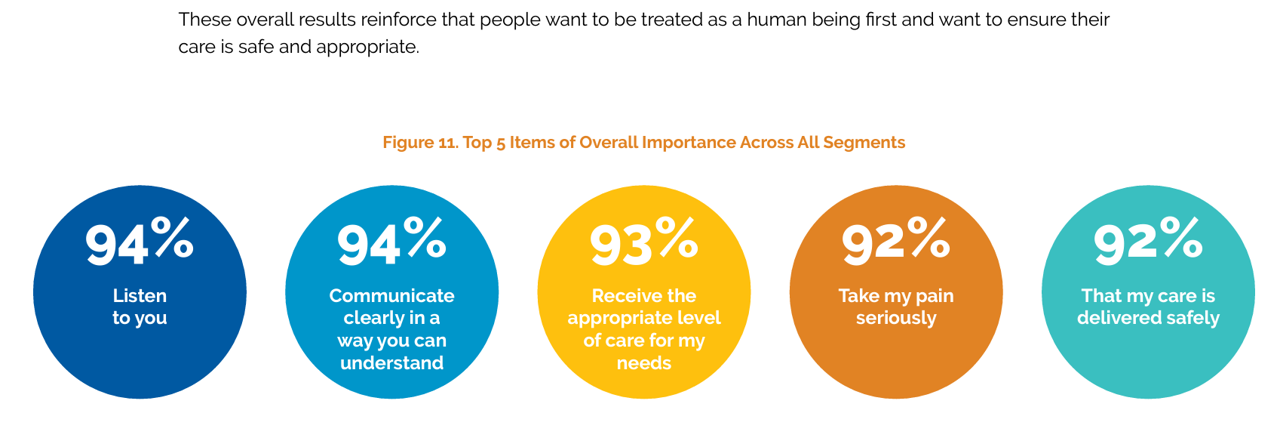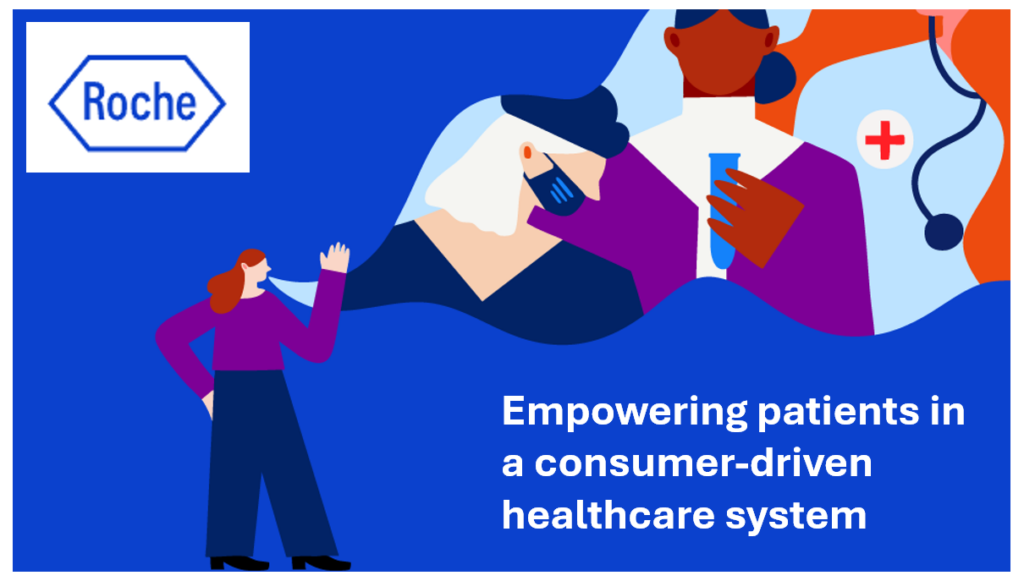Patients’ experience with health care in the U.S. dropped to its lowest point over the past year, explained in the 15th release of The Beryl Institute – Ipsos PX Pulse survey.

The study into U.S. adult consumers’ perspectives defined “patient experience” (PX) as,
“The sum of all interactions, shaped by an organization’s culture, that influence patient perceptions across the continuum of care.”
The survey was fielded by Ipsos among 1,018 U.S. adults in March 2024.

Health care providers (and other industry stakeholders that go B2B or B2B2C (or P) are all thinking about PX as patients spend more out-of-pocket and also influence their family and friends in real life and via social media.
So the top five priorities noted in the circle graphic say a lot about what underpins a health consumers’ personal report card on what’s most important in that experience — that is,
- To be listened to
- To receive communications that are clear and understandable
- To receive the appropriate level of care for “my needs”
- To have one’s pain taken seriously, and,
- To receive safe care.

Experience “happens” in clinical care encounters as well as in “process” situations such as scheduling appointments and waiting times. First, this bar chart details the various kinds of experiences with care.
The most important aspects of these care experiences are that providers listen to me, communicate clearly and understandably, followed by taking pain seriously, providing a clear plan of care, and inspiring my confidence in the providers’ abilities. Closely following these factors are the provider asking me questions and trying to understand my needs and preferences, and treating me with courtesy and respect.

Next, to the process factors — which involve scheduling, ease of billing and paying, and clear treatment plans at the point of discharge.
The most important of these, most consumers say, is the ability to schedule an appointment or procedure within a reasonable timeframe. Several other factors are nearly as important, such as a clear and respectful billing process; a discharge/checkout process with treatment plans and clear explanations of next steps; an easy processing for transitioning health information between providers; the ability to easily access my medical information or test results; and waiting times that I feel are reasonable, among other process experiences.

Health Populi’s Hot Points: An important reason health care providers and other stakeholders who are direct touchpoints with health consumers is that patients are wonderful ambassadors as influencers when care goes well and experience is positive.
When experience goes wrong, though, patients’ influencer follows these emotions as patients-as-consumers feel even more inspired to report negative perspectives to family and friends. I arrayed two charts from the report on one graphic to compare the positive consumer PX experience and outcomes (on the left vertical bar chart) versus the negative (on the right-hand horizontal bar chart). Note that a consumer’s positive PX prompts 51% of patients to share the experience with family and friends vs. the 62% of patients with negative experience who report that sorry state of affairs with their social network.
The Beryl Institute-Ipsos report writers correct recommend in their conclusion the following:
“The opportunities healthcare has in front of it are significant and require new and forward-thinking conversations….In keeping things simple, in honoring the person in front of us, and then in executive on plans to reinforce those fundamentals.”





 I was invited to be a Judge for the upcoming
I was invited to be a Judge for the upcoming  Thank you Team Roche for inviting me to brainstorm patients as health citizens, consumers, payers, and voters
Thank you Team Roche for inviting me to brainstorm patients as health citizens, consumers, payers, and voters  For the past 15 years,
For the past 15 years,